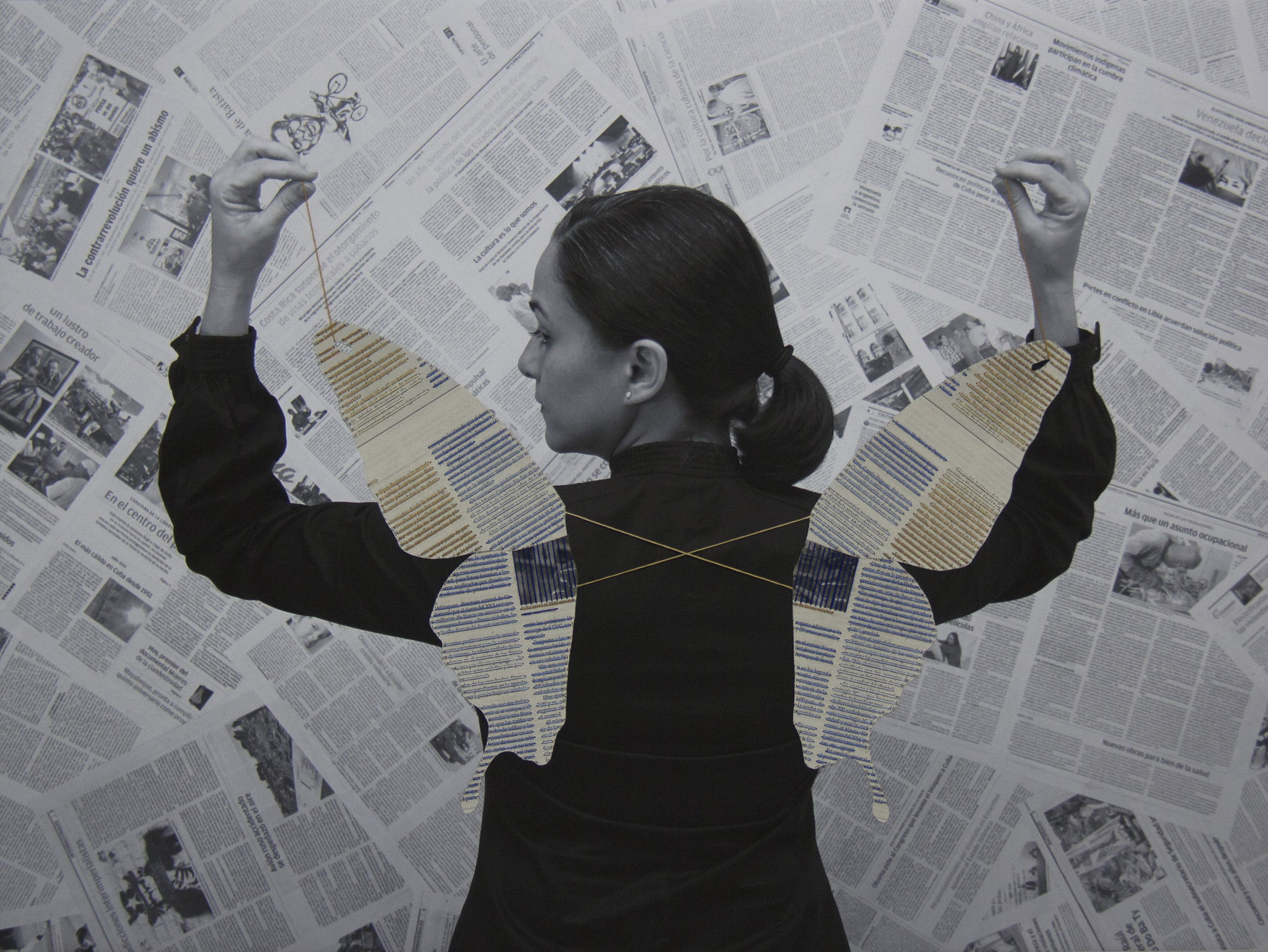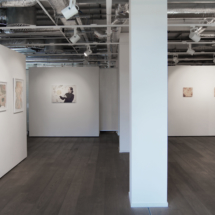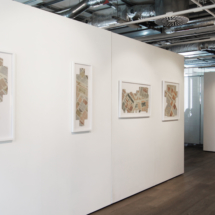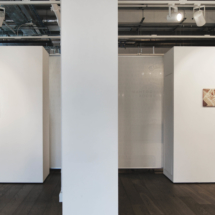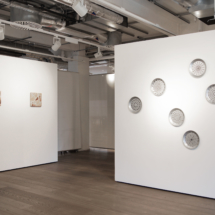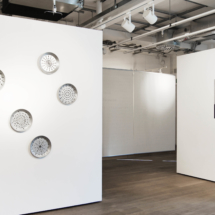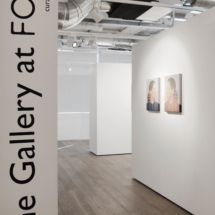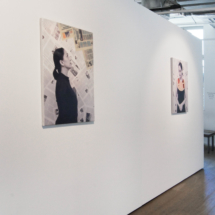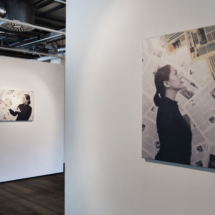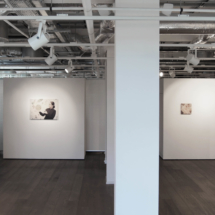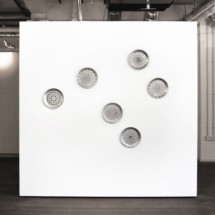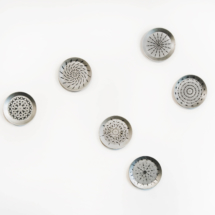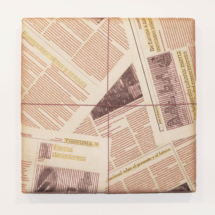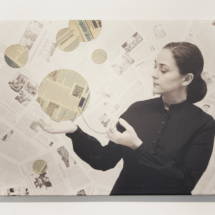Parallel Discourse
Aimée García
Private View/Opening: 16 March, 6:30-8:30pm
Exhibition: 16 March - 30 April
The Gallery at Foyles Bookshop
5th floor, 107 Charing Cross Road
London, WC2H 0DT
Aimée García. Pushing Further and Beyond.
Aimée García emerged on the Cuban and international art scenes in the Nineties, with strong references to the History of Art in her early work. Those paintings could be misinterpreted as idolatory gestures towards iconographic images, but her merit is in the subtle additions and changes that she deftly includes, bringing new life to the originals. It is the case of a wicked game of analogies between the erotic pleasure of representation in painting, the hedonistic presence of the signified, and the remnant of meanings extracted from these frictions.
The real central concern that of those early works was the relation between defined psychological realities and their representation. Thence arose her desire to reinvent, to enjoy, and to question the discoveries of distant cubical, unitary perspectives and their scientific pretensions From these quandaries of art history, she also ventured into material investigations using ribbons, mirrors, and inlays which serve to disrupt the conventional modes of representation. Finally, her mission has become to gather and transform all archetypes of femininity that have survived the course of history.
Self-portraiture should be imagined as a universal brand that reflects complex and controversial psychologies. García is not interested in representing her personal life, but rather, she represents the universal feminine experience that incarnates itself in an alternative manifestation. The artist is pictured in a series of painted self-portraits as the masculine damsel of the forest, the athlete, the Amazon woman who blazes a single breast but whose pride is power and virginity. She is pictured as a victorious Judith who evinces the head of her beloved enemy. Aimée and Artemisia fuse together in the natural power and force of vermin, serpents, lions, and scorpions. Aimée appears as the indifferent seductress Venus; corporeal manifestation of the sacred and the profane. Aimée, as Athena, paragon of discord and vengeance; Aimée as a nun with the face of a young huntress. Aimée in her own maze, her own trap of hair and yarn that run from mother to daughter, daughter to son. These are beings that attract and repel each other, that loathe and complete one another.
Next came digital photography, a debate in García’s work between the photographic and painterly images. Her body of photographic work has yet to be fully grasped in its complex polemics. Her first works in this genre played on the reconstruction of mythic-historical narratives and their representation, a continuation of her initial practice in painting. Her photographic self-portraits ended up containing real elements, such as her own hair, continuing her investigation into the duality of the visual plane and natural object. This is the case in El Vuelo (Flight), La Colecta (Collection), and Aimee como Penelope I and II, all from 1997. In El Vuelo, the reclining body of the artist is photographed and supplemented by her hairs shaved off of her own head. For La Colecta, Aimée poses together with a male model, referencing the story of Samson and Delilah, his hairs used to compensate for her baldness. In Aimée como Penelope I and II, she is pictured weaving or sewing her clothes to her own pictorial image.
These exercises become confrontations as well as harmonies in works such as La Duda (Doubt, 1998), in which painting and photography are combined to create a triptych, where the reformulation of the self as an incomplete identity becomes whole only in the psychological and sexual reconstruction in the moment of being loved. Meanwhile, in Atributos (Attributes), Cóncavo (Concave), and Juego (Game, all 2004), the artifice of inserting the painterly into photography is reinforced. Aimée creates masks of profiles with painted and engraved wood which are then placed on her models alongside real objects. With this action, she jeopardises the intrinsic value of truth in the photographic medium, with the mask functioning to mediate the pictorial value of the photographic effect, while simultaneously disrupting the naturalism of photography in a process of ostranenie, or making-strange. The strangeness of these genderless masks – painted and photographed – perturbs the typical reading of sexuality in an expedited and direct way, like the process of digital photography. With time and experimentation, these have become photographs of objects that reflect on the human condition. From here, an interpretative model emerged which subverts the technological determinations of digital photography.
The subtlety with which Aimée García has raised and addressed some of the most important issues on gender that she – and her fellow women of this same generation - has set her apart fromfrom the usual programmatic and overtly political tone of many parallel art practices focusing on sexuality.
Her performance works during the 11th and 12th Havana Biennales - Pureza (Purity, 2012) and La Dama de Rojo (the Lady in Red, 2015) - are examples of this tendency, where the clothing, architecture, and urban environment become accomplices in her interventions. In the former, two women weave a funerary blanket on the boardwalk; in the latter, one androgynous figure is dressed in red with references to various literary (The Little Prince) and political (the suit resembles a military uniform) narratives. Her approach is constructive and conciliatory.
The newest series of works presented here in Parallel Discourse (2017) synthesise a considerable body of works from an artist who transforms codes and garments into symbolic rules, models, and ways of disrupting these systems. The costume becomes an imposition on epochal, psychology and even gender, while the personal dimensions of this imposition leave space for compliance or rebellion.
Like a universal top model, from the traces of allusions to'the modern woman' or in more traditional styles, the poses, the facial expressions, and their relation to the creation of a canon via the press, advertisement, and social information, place us in an eternal debate between the individual's intent to transgress and the power of societal control. This is also expressed in a variety of materials such as metallic pots sewn with yarn, referencing the traditional ways of “dressing” a table and “serving” with cloths the small plates brought together in a pinnacle of filigree yarn. Perhaps for the same reason, with such symbolic references, the artist is compelled to create the small paper compositions (the 'presents'), so that in the end, we can be the owners of our own messages, choosing what we emit and controlling our own interlocutions.
Danny Montes de Oca
Havana, February 2017
